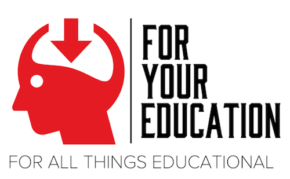Cross-Curriculum: Arts Based Program Foster Learning
The article, “Art-Infused Project-Based Learning: Crafting Beautiful Work”’ discusses infusing “….the arts into a project-based learning model, emphasizing personalized learning and redrafting multiple revisions in the process of iteration.” It is such a wholistic way of teaching, that one student even stated that, “…it gave me a chance to put myself in the shoes of the people at the time and to experience history through their eyes. The history livens up the drama, and the drama livens up the history.”
When planning a project-based learning lesson, the article suggests a straight forward checklist. The following suggestions were included:
- Essential Question: What question or problem will drive the project? How do we use immersive theater — where the audience becomes part of the play.
- Authentic Audience and Exhibition of Beautiful Work: What is the vision? Who is it for? Why are they learning it? Students will perform their play to a public audience, including the local history association, immersive theater actors and producers, and 200 other community members
- End Product: What is being created? The end products will be a three- to five-minute immersive theater performance and an essay.
- Significant Content: Is curriculum content properly covered? Students will focus on weaknesses within the leadership, emerging ideas during that time, and an issue — economic, political, or social —
- Rigorous Assessment (including the opportunities for 1:1s with all students): How will you ensure the children have learned and made progress? Students will be assessed with non-graded multiple choice tests at the beginning of most lessons, one-on-one and small group conversations each lesson, weekly essay workshops and play critiques by their peers, and their final performance. Students will also be assessed by theater professionals and a historian who will watch their play and spend about 15 to 20 minutes with them in a question-and-answer session.
- Timelines and Transparency: Has the flow of the project been considered? How will you share this with students? The immersive play and essay will be broken down into smaller deliverables with weekly critiques and deadlines. On day one, students will get a design brief outlining their final product, their authentic audience, the content they need to cover, and their deadlines throughout the process.
- Student Choice: What aspects of the project will allow students to express themselves creatively? Students will choose which revolution they will focus on. They’ll also choose who they will group with for their play, how their play unfolds (and what they need to learn to create an accurate and strong script and performance), and the focus of their essay.
- Grounding text: What will students read in order to develop their understanding? Over the holidays, students will watch a documentary, read at least part of a textbook, and read a scene from a play. They will have their textbook to work with throughout the course of the term, and they will also watch speeches, documentaries, and listen to immersive theater experts speak in class. Students will be given responsibilities from the beginning of the project. Students meet three times a week for 100-minute class periods. On day one, both teachers launch the project with a design brief — outlining what the final product will be, what they need to include in it, all of the deadlines from start to finish, and who their audience will be at exhibit night. From day one, we say, ‘This is your end product. It is going to happen — the exhibition — on this date and time.’ We give our students the complete brief so they know from day one what they should be doing,” explains Pardoe. This allows students to take ownership and direction over their own learning, and plan how to meet deadlines at their own pace. “How the content and class are taught varies with the teaching style of those collaborating. Some teachers choose to co-teach every class, while others split the students in two groups, teach the subjects separately, and bring everyone back together for key co-taught classes. In either case, teachers integrate elements of their own discipline with their co-teacher’s, with their students’ end products ultimately reflecting both content areas.” This fosters student-directed learning. “When making their product, students learn to see their own gaps in knowledge and are able to go to either teacher, letting them know what learning they need to improve their product throughout the term.” Instead of whole class lessons, students learn by their interests and needs. “When students come to him [teacher] asking to learn more about a topic, he’ll pull about 12 students together and facilitate Harkness debates — student-led discussions at an oval table where everyone can see each other and participate. He’ll give them something to read beforehand so that they’ll come to the debate prepared to speak.” Students then have 20-minutes “discussing a problem or discussing some content in depth. At the end of the session, I [the teacher] give feedback as to how they performed and also clarify any misconceptions that I heard. It’s a way of developing knowledge in students, but it also allows them to talk about and think through their ideas.” Assessment can occur while the students are preparing their projects. While their students work on their projects, the teachers will observe them and ask questions to assess their understanding, such as:
- Explain why this happens.
- Explain why you’ve done this.
- What is this showing about the science?
- Tell me what would happen if you had done X rather than Z.
- “By doing that, you can start analyzing how much have the students understood. You can say, ‘’I know I need to speak to this student. I need to work with them because they still haven’t understood what the difference between amplitude and frequency is.’’”
- If there is ever a gap in a student’s knowledge, the teacher will pull students into smaller groups — even in groups of two — and teach them content in a more traditional way.
- The brilliant thing about this program , which was pointed out in the article, is “working with two teachers,” explains one teacher, , “is that you can start to target individual students who you know aren’t quite there yet. It provides the opportunity for students to work independently, but also provides pivot points in which you can start doing interventions with students quite intensely and within a lesson.”
One of the biggest messages of this school is to do things in greater depth. They achieve this through their redrafting process. “What I want to see is not just how good the third draft is, but what is the journey that you’ve gone on?”. Redrafting also makes students aware of how far they’ve come in their learning. “When they’re getting that feedback, acting on that feedback, and changing things, they can actually see that they can do something that’s really worthwhile and beautiful for them.”
It’s the drafting and critiquing process that really drives the project.” The students will bring in a plan for their essay and get it critiqued, then an introduction which is also critiqued, then a whole first draft focused on grammar, spelling, and punctuation — and they will continue to bring in drafts for critiques diving deeper into the concepts behind the essay. They show off their final essay on exhibit night — either displayed in a book or on a wall.
Their students go through the same critique and redrafting process with working on their immersive play. “They make, they redraft, and they are critiqued.” They “…do something called an audience response — a peer critique.” Students participate in a weekly audience response, giving feedback about what their peers might keep, add to, or take away from their play. “It points them to the direction of what needs to be improved, what’s not clear, and where they need to add more knowledge.”When a student spends a term redrafting one essay — or a three- to five-minute play — it allows him or her to cover a topic in depth. Additionally, these topics often lead to gateway topics for discussions.
Redrafting also makes students aware of how far they have come in their learning. When they’re getting that feedback, acting on that feedback, and changing things, they can actually see that they can do something that’s really worthwhile and beautiful for them.”
http://www.edutopia.org/practice/arts-infused-project-based-learning-crafting-beautiful-work




